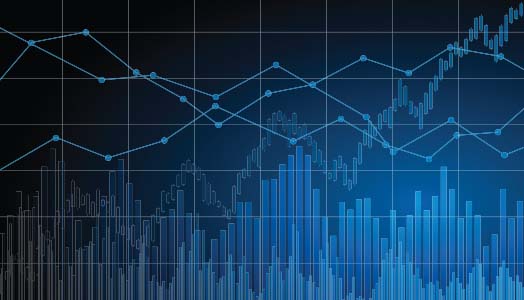Using Technology
A level Mathematics
Embedding the use of technology in your teaching practice can really boost your students’ learning. Tools that provide dynamic imagery – such as Autograph, Desmos, and GeoGebra – can help your students access mathematical ideas that might be difficult to understand.
Spreadsheets are particularly useful tool for topics that involve modelling or analysing data, such as working with the Large Data Set. As well as assisting your students’ learning, using spreadsheets will help your students develop useful skills for further study, and in their future workplace.
Ofqual requirements and calculators
Ofqual’s GCE subject-level conditions and requirements for Mathematics state that “The use of technology, in particular mathematical and statistical graphing tools and spreadsheets, must permeate the study of AS and A level Mathematics.”
These conditions and requirements also state that the calculators used by A level Mathematics students must include:
- an iterative function
- the ability to compute summary statistics and access probabilities from standard statistical distributions
For A level Mathematics, students require a calculator that can calculate Binomial and Normal probabilities directly from values. This means they will need an advanced scientific calculator such as the Casio 991EX ClassWiz or the TI-30X Pro.
Graphical calculators have this facility, along with the ability to plot the graphs of functions, and so integrating the use of graphical calculators into teaching and learning is an effective way of achieving both of the Ofqual requirements. An alternative approach is for students to use an advanced scientific calculator and also have access to some other graphing tool(s) during their study, such as Autograph, GeoGebra or Desmos.
Integrating technology into your Scheme of Work
This helpful guidance suggests how you can integrate technology into your scheme of work for both approaches mentioned above. It includes classroom-ready materials for Autograph, Casio graphical calculators, Desmos, and GeoGebra.
You might also like to explore these series of student tasks for integrating the use of specific software into your Scheme of Work: Autograph, Casio graphical calculators, Desmos, GeoGebra.
Working with Large Data Sets
The large data set for each specification can be downloaded from the awarding bodies’ websites: AQA, Edexcel, OCR A, OCR B (MEI) (for OCR specifications, see pre-release materials).
We offer helpful, extensive, and free resources to support working with Large Data Sets. These include:
- Workbooks that show how to use Desmos to investigate the large data sets
- Videos demonstrating useful techniques for using Excel and GeoGebra for statistics
Special access arrangements
OCR has produced some helpful guidance on the use of technology as part of special access arrangements for maths assessment for pupils with specific access needs. This includes how an emulator, or other software such as Autograph, GeoGebra or Desmos, can be used in place of a calculator.
Explore MEI’s data science courses
Our data science courses aim to give young people a hands-on introduction to the field, which will develop their understanding and skills and raise their awareness of the broad and burgeoning career opportunities it offers.

Introduction to Data Science
This free self-study course introduces Core Maths and A level Mathematics students to data science. It aims to give students an appreciation of the value of data science, and to support them in making informed choices about their future study and career options.
The course is designed to be studied independently during the summer term of Year 12, or over the summer break between Years 12 and 13. It consists of an introduction and six lessons of short videos and programming tasks, in Python. Guidance for teachers is available.
Start course
Data Science Taught Course
The Data Science Taught Course is designed for Year 12/13 A level Mathematics and Core Maths students and follows on from Introduction to Data Science self-study course.
The Taught Course features weekly online lessons, with supporting study material, over the autumn term. Students are assessed through both continuous assessment and a short examination. The teaching and marking of the assessment is offered by MEI tutors, though schools/colleges are expected to administer the examination. Places on this course are limited.
More information and applyThe Big Earth Data Project
MEI has developed resources to help your students develop skills in exploring large Earth observation datasets while teaching them about the measurements satellites can take. These resources will help students learn about satellite modelling and forecasting. Focused on engaging contexts such as climate change, the effects of humans on Earth, and emergency disaster response.
Three sets of resources are available. Each set has activities designed for Key Stage 3-4 and A Level students, using Data Science skills to analyse real satellite data. The best part is that all resources will be free for anyone to access.
GeoGebra
MEI is a GeoGebra Institute. We support teachers and students by providing:
- face-to-face and online professional development for teachers
- free resources for AS Mathematics and A level Mathematics
- support for GeoGebra users
- presentations at events
Please get in touch if you’d like to find out more.
Desmos
MEI works closely with Desmos. We support teachers and students by providing:
- face-to-face and online professional development for teachers
- free resources for AS Mathematics and A level Mathematics
- curating collections of Desmos activities for UK teachers
- support for Desmos users
- presentations at events
Please get in touch if you’d like to find out more.
Further support
The choice of which technologies to use is your decision, but we can help you make the best use of them by providing professional development and resources.
Is there room for improvement in the way your department uses technology to support your students of all abilities and at all levels? A one-day course from our technology specialists will make a real difference. If you’d like any advice on using technology in your teaching, please get in touch.
